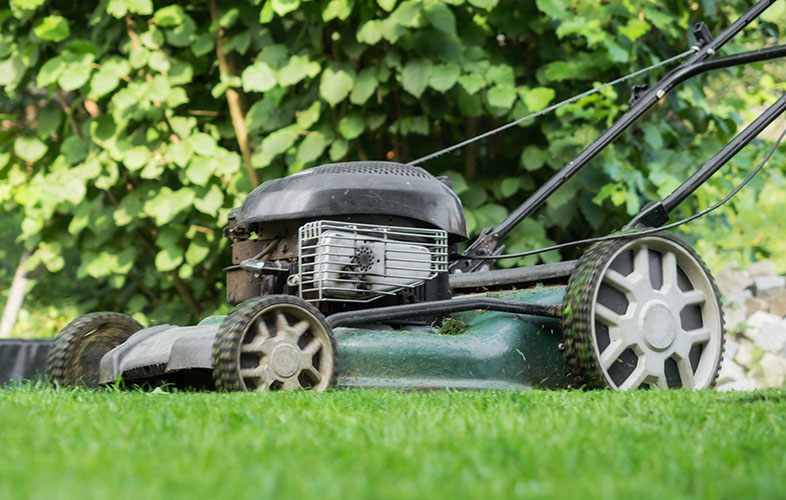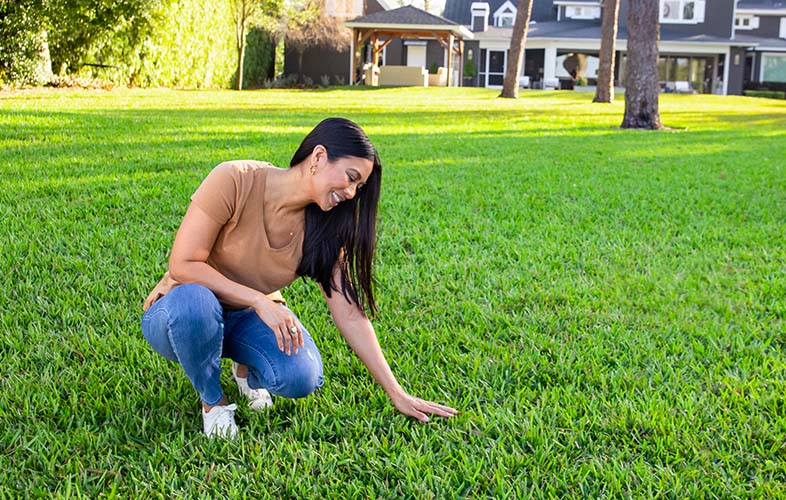TruGreen suggests following these steps before overseeding for best results and consulting your lawn care professional in advising on a full before and after seeding plan:
1. Decide on the type of turfgrass to use.
If your existing turfgrass hasn’t been performing well, overseeding your lawn with a newer, improved turfgrass variety that is suited to your local climate is often the best way to thicken your lawn through the overseeding process. The newer turfgrass varieties may provide better color and are better able to resist damage from drought, diseases, and lawn damaging insects. TruGreen takes the stress out of decision-making by partnering with seed growers to use the best grass seed for your lawn that is bred to withstand the stresses of your climate and thrive in your area.
2. Choose the right time of year to overseed your lawn.
This will also depend on where you’re located. Lawn care experts agree that early fall is usually the best time to overseed, but if you’re in colder regions, it’s advisable to overseed in the late summer when the daytime temperatures are still warm enough to encourage germination. Your TruGreen expert will be able to advise on the best time of year to overseed for your region.
3. Mow the lawn before you start the overseeding process.
Mowing before overseeding helps reduce excess material that could block the seed from getting to the ground. Reducing your mowing height is not recommended as it does not significantly aid the overseeding process and could damage your existing turf. Before overseeding, we recommend mowing at the standard recommended height for your turf species.
4. Water the lawn enough to moisten the soil but don’t saturate it.
TruGreen recommends watering the lawn the day before overseeding.
5. Aerate the soil before overseeding.
Use a professional aeration service, core aerator, or slit seeder to open up the soil to best receive the seed as soil to seed contact is critical for best results. You may be wondering if you can aerate after overseeding. We recommend aerating before applying seed, not after. Aeration removes thatch and pulls soil cores out of the lawn, making a good seed bed for your newly planted seeds to reach into the soil. Without aeration, your new grass seeds may not be able to reach the soil and germinate.
6. Fertilize your lawn after aeration.
Proper fertilization provides your lawn and soil with the nutrients it needs to promote your newly germinated seeds to establish and mature more rapidly. Just make sure to water the fertilizer into the soil to ensure it reaches the root system. If you are wondering if it is best to fertilize before or after seeding, either option may be advisable. However, if you do choose to fertilize before overseeding, it may be best to use a slow-release fertilizer variety. Multiple factors go into choosing the right fertilizer to promote germination of the new grass seed and your TruGreen professional will be able to pick the best fertilizer for your grass type, soil condition, and time of year. For more information, take a look at our comprehensive guide to aerating and fertilizing your lawn for overseeding.


 Branch Finder
Branch Finder














Facebook
X
Instagram
Youtube
Copy Link
Email